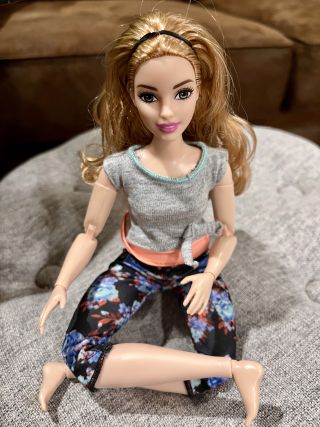Media
Barbie’s Psychological Makeover
How the 'Barbie' movie beat all expectations.
Updated July 26, 2023 Reviewed by Davia Sills
Key points
- American women's feelings about Barbie may be a mix of loving nostalgia and ambivalence about stereotypes.
- 'Barbie' represents a psychological makeover of Barbie, with an invitation for the audience to do the same.
- The 'Barbie' film explores the modern woman's inner conflict over contradictory social messages.
When I was a girl, I had a toy called Barbie Fashion Face. Barbie’s head was roughly the size of a cantaloupe. Little girls gave Barbie a makeover with reckless abandon, styling her hair and applying lipstick and eyeshadow. As a plastic fashion icon, this is the kind of makeover you expect from a Barbie.
Flash forward to the present time, and we see Barbie going through a makeover again. Only this time, her makeover is largely psychological. Barbie, it turns out, was up for a pretty major evolution.
Directed by Greta Gerwig and starring Margot Robbie, the Barbie film had more than a few magic tricks in its bag of accessories. Gerwig and Robbie took Barbie to a place she’d never been before, and audiences responded with a rather surprising level of enthusiasm.
Many progressive-thinking women have had a complicated relationship with Barbie. Perhaps we feel nostalgic because we grew up with her as a friend. We felt uncomfortable with her stereotypical representation of women—totally impossible figure, tiny feet whose heels never reach the ground, and prescribed vision of beauty.

Barbie Reimagined
The dolls themselves have evolved somewhat. There are now “curvy” Barbies, “made-to-move” Barbies, and even “extra” Barbies. In the weeks leading up to the film’s release, I purchased a curvy, made-to-move yoga Barbie with strawberry blonde hair and what appeared to be real-woman thighs.
I must tell you, looking at a Barbie who has the thighs of a more typical modern woman has given me more relief than I imagined it would. I teach yoga, and I brought yoga Barbie with me to class. I was touched when more than one student said she looked like me. A Barbie who looks like a normal mom: now, that was an unexpected surprise.
Spoiler Alert: The Barbie Plot
You may have heard by now that the Barbie movie outperformed expectations, setting a number of records, including the top North American box office opening for a movie directed by a woman and the “biggest debut for a comedic film.”
In the film’s clever plot, a live Barbie doll, played by Margot Robbie, somehow mystically merges with the consciousness of Gloria, a middle-aged mother of a tween daughter played by America Ferrara. Consequently, Barbie starts to think about death and has a general existential crisis.
Though we think the film is about Barbie’s journey, and it is, it’s also very much about the American woman’s journey, as represented by Ferrara’s character. Barbie is just one representation of the conflicts she’s felt about being a modern American woman.
In one of the most memorable speeches I’ve ever witnessed in a film, Gloria deftly explains the deep and unsolvable contradictions inherent in the life of an average American woman. The speech was so spot-on that it made me feel like sobbing openly in the theater—and I did shed some tears. Gloria gets it. It’s a no-win situation. Unless we can find a way out for ourselves.
And that’s what the film calls American women to do: see the situation—our situation—and ask if we can find a way out. What it calls for is not only or even necessarily changing the world, but first seeing what we can change in our own heads.
I didn’t expect to get that message from this film. Our old friend Barbie, it turns out, is full of surprises.


